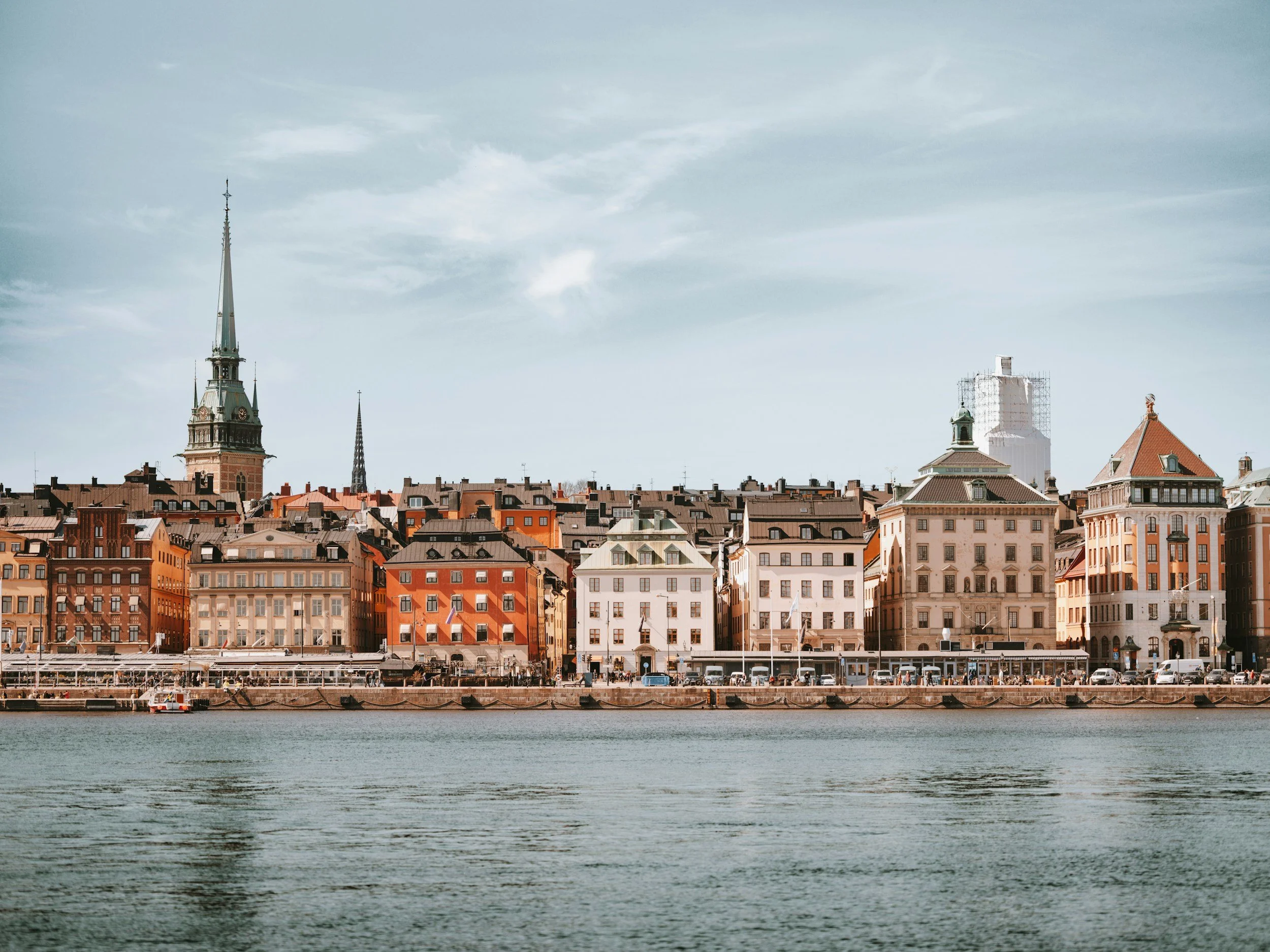24. Stockholm
“The Swedish capital was a small, mediaeval town on a rocky island that raised its ridge high above the sea. At the top, the market-place was situated, separated from the church by a single building block. Originally, the town had been very small, surrounded by protective walls which fortified the tremendous acclivity from the low-lying coast to the town perched high above it. But soon the houses of great merchants sprang up outside the walls with their gabled fronts cheek by jowl along the quayside. Today we can still see the Old Town rising above a palisade of gabled buildings. Between the old houses, plastered in yellow ochres and reds, steep, narrow alleys lead to the top of the hilly island. And now the gigantic cubic form of the new palace was added to the town (Kungliga slottet), standing four-square and firmly planted, in contrast to the myriads of coloured prisms which, together, form a strangely animated body.” *
With its striking location geographically situated on a group of islands in the Stockholm archipelago, freshwater Lake Mälaren flows into the Baltic Sea.
Its Old Town (Gamla Stan) is located at the centre next to tiny Helgeandsholmen that houses the Swedish Parliament between Norrmalm & Östermalm and Södermalm.
Every area is bounded by water, and green areas with deciduous forests abound.
Interspersed areas have been built up and developed in timber or brick and with colourful painted buildings as described by Rasmussen.
This has been done sensitively with care, the only jarring development being the modern five high rise slab blocks of Hötorget in Norrmalm striding along the Sveavägen to Sergels Tor junction, a nineteen sixties urban renewal project.
Notwithstanding this commercial scheme, with its efficient underground Tunnelbana, the ‘T’ Metro, bored through rock with striking stations as at T-Centralen which integrates the city under its waterways, residential expansion has been undertaken mainly in the suburbs with new areas as Vällingby and Farsta, as planned new settlements for the growing population.
In general, a balanced pattern of development has been followed and whilst new infrastructure and highways have been built as the peripheral Essingeleden motorway, congestion pricing was introduced for vehicles in the city centre in order to restrain and fund new transport infrastructure and tunnels.
With Arlanda International Airport located well north of the city, it has its own dedicated rail connection.
In summary, despite challenges of its geophysical layout of the land, with its parks and waterways, the city is maintaining its fine Nordic environment and biodiversity to the benefit of its million citizens and visitors.
*Steen Eiler Rasmussen – Towns and Buildings – MIT Press, 1951.

